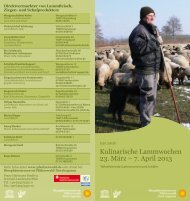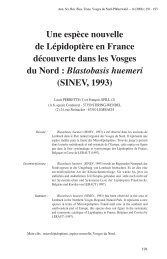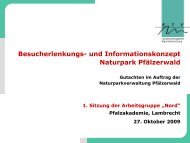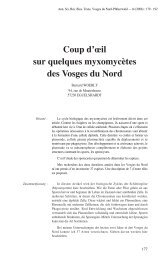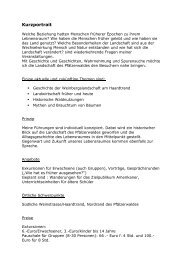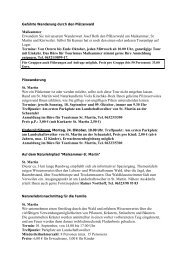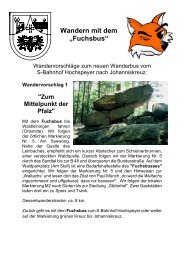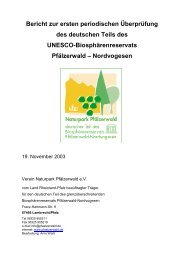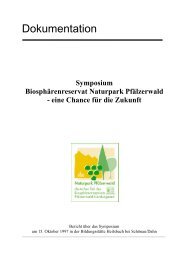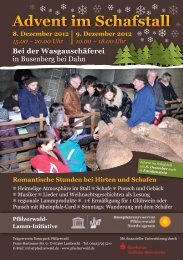Transboundary Biosphere Reserves - Naturpark Pfälzerwald
Transboundary Biosphere Reserves - Naturpark Pfälzerwald
Transboundary Biosphere Reserves - Naturpark Pfälzerwald
Create successful ePaper yourself
Turn your PDF publications into a flip-book with our unique Google optimized e-Paper software.
Results of the ‘Open Space’ - Workshop in Edesheim<br />
•Elaborate and implement a common<br />
management plan and a monitoring system;<br />
•The partner countries involved in the TBR<br />
should continue ratifying the main<br />
international conventions that could<br />
strengthen the implementation of wise<br />
transboundary management objectives.<br />
■ How to manage arising conflicts?<br />
•Promote local negotiations between the<br />
partners of the TBR (use the TBR as a<br />
framework for discussion of problems);<br />
•Involve the National MAB Committees in<br />
order to jointly develop solutions to the<br />
conflict;<br />
•Ask UNESCO to act as a mediator in the<br />
partners’ discussions (negotiations);<br />
•Involve international organizations and their<br />
relevant conventions for reminding the<br />
governments of their commitments<br />
concerning the protected areas, by recalling<br />
the ratified conventions to be applied.<br />
Discussion-Group 9: ‘Network<br />
establishment’<br />
Key points of discussion and results<br />
•Cooperation<br />
•Implementation of joint projects<br />
•Fundraising<br />
•Supporting each other<br />
•Exchange of knowledge<br />
•Transfer of experience<br />
•Conflict resolution<br />
•Communication<br />
•Training and exchange visits<br />
•Economic visibility<br />
How this can be achieved:<br />
. Select focal persons for the TBR<br />
. Seek UNESCO’s assistance in the TBR<br />
network establishment<br />
Tools: website, exchange of publications, joint<br />
meetings, etc..<br />
Discussion-Group 10:<br />
‘How TBRs contribute to the regional<br />
development’<br />
Key points of discussion and results<br />
•Relationships between TBR territories and<br />
the surrounding areas<br />
•Importance of initiating a dialogue between<br />
the local communities (inside the TBR) and the<br />
surrounding populations (outside the TBR)<br />
•Discussions of TBRs should be in line with<br />
regional development<br />
•Involvement of local communities in the<br />
decision-making process<br />
•Cultural knowledge exchange<br />
•Promoting benefits through the creation of<br />
public-private partnerships<br />
•Development of an innovative management<br />
model that could be exported outside TBRs<br />
•Influence of the TBRs on the surrounding<br />
land-use planning<br />
Examples of different tools identified for economic<br />
development:<br />
•Common legal framework<br />
•INTERREG III<br />
•Labelled/certified TBRs products<br />
•Revolving funds<br />
•Ecotourism<br />
•Integrated services, integrated and larger<br />
markets, and products marketing<br />
Discussion-Group 11: ‘Which kind of<br />
structure for TBRs?’<br />
Key points of discussion and results<br />
■ What would be an efficient structure for<br />
managing a TBR?<br />
■ Are there examples of successful structures and<br />
good practice?<br />
● The structure should comprise a<br />
coordinative and an administrative element.<br />
74



